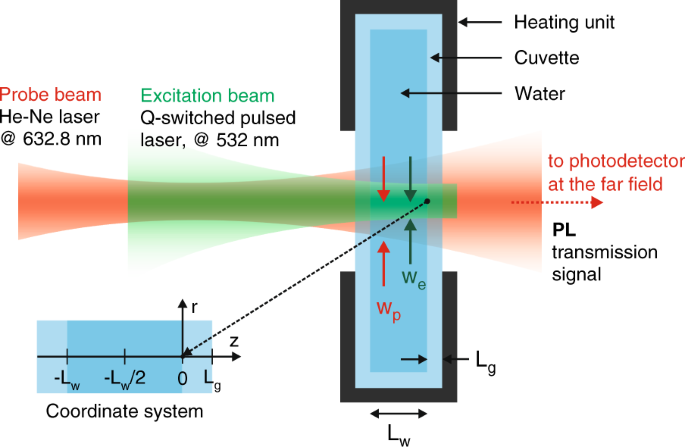新しいデータの解析に重要な役割を果たしたChemCam ChemCam played a key role in analyzing new data
2022-04-21 ロスアラモス国立研究所(LANL)

ChemCamで撮影された「Ben Hee」という岩石の画像。地球上の湖にある柔らかい堆積物で形成される黒色のノジュールで満たされた岩盤を示す。Credit: NASA/JPL-Caltech/MSSS/LANL/IRAP-CNES
・火星のゲールクレーターにあるグレン・トリドン地域の最初の分析結果は、この地域の岩盤が惑星の初期の歴史において地下水によって変化したことを示し、過去の居住性の理解や火星の過去の生命発見の可能性に重要な意味を持つことが明らかになりました。この発見は、Journal of Geophysical Research Planetsの特別号に掲載され、グレン・トリドン地域からの最初の結果のいくつかを記述しています。
・ロスアラモス国立研究所の宇宙とリモートセンシンググループと研究の主執筆者のパトリック・ガスダは、「探査機が火星に送られた主な理由は、初期の暖かく湿った火星から冷たく乾いた火星への移行を理解できるように、この地域を調査することでした」と言いました。「この地域はおそらく湿った火星の最後の段階を表しており、火星の気候が変化する直前に何が起こったかを知るための基準として、湖の堆積物を理解したいと思います。これは、火星の歴史の中で非常に活発な時期であったことが判明しました。」
<関連情報>
- https://discover.lanl.gov/news/0421-gale-crater-on-mars
- https://agupubs.onlinelibrary.wiley.com/doi/abs/10.1029/2021JE007097
火星ゲールクレーターの粘土リッチなグレン・トリドンユニットにおける変成岩の形態と化学的特徴の概観 Overview of the Morphology and Chemistry of Diagenetic Features in the Clay-Rich Glen Torridon Unit of Gale Crater, Mars
Patrick J. Gasda,J. Comellas,A. Essunfeld,D. Das,A. B. Bryk,E. Dehouck,S. P. Schwenzer,L. Crossey,K. Herkenhoff,J. R. Johnson,H. Newsom,N. L. Lanza,W. Rapin,W. Goetz,P.-Y. Meslin,J. C. Bridges,R. Anderson,G. David,S. M. R. Turner,M. T. Thorpe,L. Kah,J. Frydenvang,R. Kronyak,G. Caravaca,A. Ollila,S. Le Mouélic,M. Nellessen,M. Hoffman,D. Fey,A. Cousin,R. C. Wiens,S. M. Clegg,S. Maurice,O. Gasnault,D. Delapp,A. Reyes-Newell
Journal of Geophysical Research Planets published: 21 April 2022
https://doi.org/10.1029/2021JE007097
Abstract
The clay-rich Glen Torridon region of Gale crater, Mars, was explored between sols 2300 and 3007. Here, we analyzed the diagenetic features observed by Curiosity, including veins, cements, nodules, and nodular bedrock, using the ChemCam, Mastcam, and Mars Hand Lens Imager instruments. We discovered many diagenetic features in Glen Torridon, including dark-toned iron- and manganese-rich veins, magnesium- and fluorine-rich linear features, Ca-sulfate cemented bedrock, manganese-rich nodules, and iron-rich strata. We have characterized the chemistry and morphology of these features, which are most widespread in the higher stratigraphic members in Glen Torridon, and exhibit a wide range of chemistries. These discoveries are strong evidence for multiple generations of fluids from multiple chemical endmembers that likely underwent redox reactions to form some of these features. In a few cases, we may be able to use mineralogy and chemistry to constrain formation conditions of the diagenetic features. For example, the dark-toned veins likely formed in warmer, highly alkaline, and highly reducing conditions, while manganese-rich nodules likely formed in oxidizing and circumneutral conditions. We also hypothesize that an initial enrichment of soluble elements, including fluorine, occurred during hydrothermal alteration early in Gale crater history to account for elemental enrichment in nodules and veins. The presence of redox-active elements, including Fe and Mn, and elements required for life, including P and S, in these fluids is strong evidence for habitability of Gale crater groundwater. Hydrothermal alteration also has interesting implications for prebiotic chemistry during the earliest stages of the crater’s evolution and early Mars.



